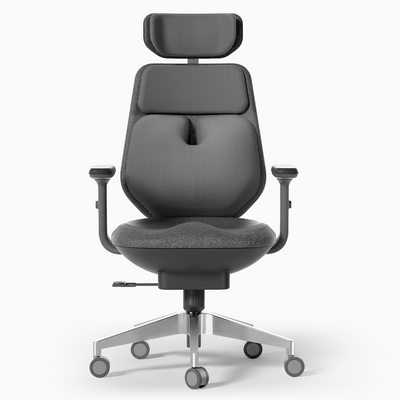
10 Easy Steps to Perfecting the Cold Plunge at Home!
Introduction to Cold Plunging
Cold plunging, also known as cold immersion therapy, is an age-old practice that dates back centuries. Originally rooted in cultural and spiritual rituals, its benefits have been celebrated by various societies.
Historical Context
From the ancient Spartans to the Japanese, many cultures have incorporated cold water immersions in their daily routines. The Spartans believed in the saying "a sound mind in a sound body", and cold plunging was part of their holistic approach. Meanwhile, the Japanese tradition of "misogi" involves purifying oneself in cold water to cleanse both the spirit and body.
Modern Popularity
Today, this technique is making a big splash in the health and wellness industry. From celebrities to athletes, many swear by cold plunging to rejuvenate their bodies, improve mental clarity, and enhance overall well-being.
How to Cold Plunge at Home
Taking a cold plunge might seem daunting, but with the right guidance, you can safely experience its invigorating benefits at home!
Choosing the Right Equipment
While some enthusiasts might opt for a natural body of water, many prefer using a designated tub or inflatable pool. Ensure it's sturdy and of a suitable size for your body to be fully immersed.
Location, Location, Location!
Place your tub in a private area, perhaps your backyard, to have a peaceful and undisturbed experience. Ensure the ground is level to avoid any mishaps.
Preparing the Water
While tap water will do the trick, some people prefer to add ice for an extra chill. The ideal temperature is around 50°F to 59°F. Always check the temperature using a thermometer to ensure safety.
Duration and Frequency
Beginners should start with short durations, perhaps a minute or two. As you become acclimated, you can gradually increase the time. Many find plunging 3-4 times a week to be beneficial.
Benefits of Cold Plunging
This chilly activity isn't just for thrill-seekers! There are numerous tangible benefits associated with regular cold plunging.
Physical Advantages
Cold plunges boost circulation, aid muscle recovery, and can improve skin health by tightening pores. Furthermore, it helps with inflammation, making it a favorite among athletes.
Psychological Perks
Beyond the physical, many report enhanced mood, better sleep, and increased mental alertness. The immediate shock of cold water releases endorphins, which act as natural mood lifters.
Safety Tips
Like any wellness practice, safety should always come first.
Listening to Your Body
While the cold can be invigorating, it's essential to pay attention to your body's signals. If you feel lightheaded or overly uncomfortable, it's time to get out.
When to Avoid Cold Plunging
People with certain medical conditions, pregnant women, or those with heart conditions should consult their doctor before attempting a cold plunge.
Personal Testimonies
Hearing from those who've integrated cold plunging into their routines can be enlightening.
Mark's Chilling Journey
"I started cold plunging last year, and it's transformed my mornings. I feel more alert, and my muscle recovery post-workout has improved significantly."
Sarah's Revitalizing Experience
"Cold plunging was intimidating at first, but the mental clarity and energy I feel afterwards are unparalleled. It's become a staple in my self-care routine."
Common Mistakes and How to Avoid Them
Diving headfirst into cold plunging can lead to some chilly missteps, but knowledge is power.
Not Adapting Gradually
The shock of cold water can be intense. Start with lukewarm water and gradually decrease the temperature over sessions to acclimate your body.
Overestimating Duration
Spending too long in cold water can be harmful. Always start with short durations and listen to your body.
Complementary Practices
To maximize the benefits of your cold plunge, consider incorporating these practices.
Breathing Techniques
Deep breathing can help your body adjust to the cold and enhance the experience. Inhale deeply through your nose and exhale slowly through your mouth.
Stretching Before and After
Gentle stretching can help prepare your body for the cold immersion and aid in muscle recovery afterwards.
Cleaning and Maintenance
Maintaining your cold plunge setup is crucial for a safe and refreshing experience.
Keeping Water Fresh
Change the water regularly and consider using a water purifier for optimal cleanliness.
Cleaning the Tub
Clean your tub or pool after each use. Mild soap and water will do the trick, ensuring a hygienic plunge every time.
FAQs
How often should I cold plunge?
- It's personal preference, but many find 3-4 times a week to be optimal.
Can I cold plunge during winter?
- Absolutely! Just ensure the water isn't freezing and always monitor your body's reactions.
Is cold plunging safe for everyone?
- Most people can enjoy cold plunging, but those with specific medical conditions should consult a doctor first.
How long should I stay in the cold water?
- Start with short durations, like 1-2 minutes, and increase as your body becomes acclimated.
What's the ideal water temperature for a cold plunge?
- The sweet spot is around 50°F to 59°F, but always use a thermometer to check.
Do I need any special equipment?
- A sturdy tub or inflatable pool is essential, along with a thermometer to monitor water temperature.
Conclusion
Taking the plunge into the world of cold immersion can be an exhilarating and beneficial journey. By following the guidelines laid out in this comprehensive guide, you'll be well on your way to mastering how to cold plunge at home. So, are you ready to dive in?
« Back to Cold Plunge







